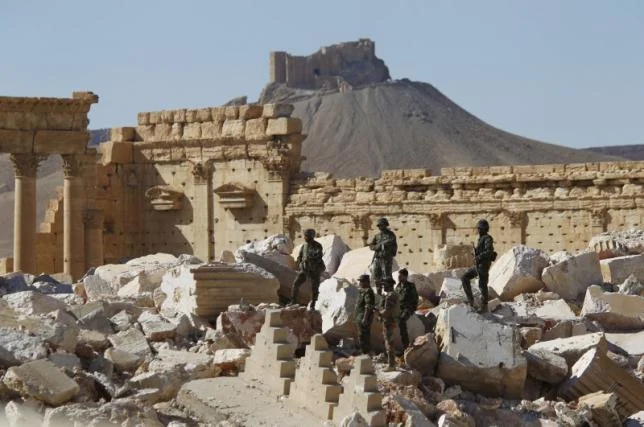Two ancient monuments in the Syrian city of Palmyra were so badly damaged by Islamic State that they can only be rebuilt using substantially new materials, Russian officials said on Thursday.

Syria in this April 1, 2016 file photo [Credit: Reuters/Omar Sanadiki]
If that were to happen, many historians would view the monuments as mere replicas, shorn of the ancient heritage of the original structures.
Experts from Russia's Culture Ministry have assessed the damage in Palmyra after the UNESCO world heritage site was recaptured from Islamic State in March.
Retaking Palmyra was the first significant victory over Islamic State by Syrian forces with support from the Russian military. It was celebrated with a concert by Russian musicians in Palmyra's ancient amphitheatre a month after the battle.
One of the symbols of Palmyra, the Graeco-Roman Temple of Bel, founded in the first century, "can be hardly restored", the Russian experts said in a report presented on Thursday.
"A recreation of the monument can only be made by its reconstruction using designs and photographs after preliminary clearing of the building's ground," the report said.

Syria April 1, 2016 [Credit: Reuters/Omar Sanadiki]
This will require at least 3-4 years and "significant financing", the experts added, estimating that the rebuilding of another key monument, the Arch of Triumph, would be possible within 9-12 months.
"After the re-creation of the monument it will 60-70 percent consist of new materials," the report said about the arch, whose vaults it said were "fully destroyed" by an explosion.
Some original fragments of the nearly 2,000-year-old Temple of Baalshamin could be restored in 2-3 months, they said.
A decision on which works will be rebuilt has not been made yet, Russian Deputy Culture Minister Vladimir Aristarkhov told a news conference also attended by the Syrian ambassador to Moscow.
Aristarkhov called on other countries, including ones in the West opposed to President Bashar al-Assad, to take part in discussions on the restoring the ruins in Palmyra, including how such work would be funded.
Author: Maria Tsvetkova | Source: Reuters [July 22, 2016]